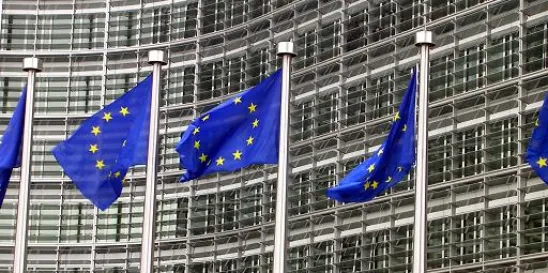| Go-To Guide: |
|
In our earlier GT Alert, we highlighted that on 1 June 2023 the European Commission adopted the revised Research and Development Block Exemption Regulation (R&D BER) and Specialization Block Exemption Regulation (SBER), together referred to as the Horizontal Block Exemption Regulations (HBER), and accompanying Horizontal Guidelines (Guidelines). The HBER entered into force on 1 July 2023 and is valid for 12 years. It allows for a two-year transitional period for existing agreements to align with the new legislation. After publication in the Official Journal of the EU on 21 July 2023, the Guidelines entered into force.
The revision mainly aims to provide more legal certainty for businesses when assessing horizontal agreements; support the green and digital transitions by making it easier for businesses to cooperate in economically desirable ways; and promote the resilience of the internal market.
R&D Agreements
The new R&D BER does not introduce major updates but rather aims to make it easier for small and medium-sized enterprises to apply joint R&D and technology exploitation agreements under the safe harbor. It provides more clarity and flexibility in calculating market share thresholds (article 7 R&D BER).
The regulation focuses on safeguarding “innovation” competition, encouraging companies to compete for new markets through innovation even if they are not direct competitors in existing product or technology markets. The R&D BER also empowers the European Commission and national competition authorities to withdraw the exemption if an individual case raises concerns about innovation competition being problematic (articles 10 and 11 R&D BER).
The grace period, which allows an R&D agreement to continue benefiting from the safe harbor even if the conditions for its application no longer apply due to increased market shares, has been simplified. The revised approach involves a two-year consecutive calendar period following the initial year in which the relevant market share threshold was exceeded (article 6(5) R&D BER).
The updated R&D BER also clarifies that if the R&D agreement includes any of the excluded restrictions, the exemption shall continue to apply to the remaining part of the agreement, provided that the excluded restrictions can be severed from that remaining part and other conditions of the R&D BER are met (article 9(3) R&D BER).
Specialization Agreements
The revised SBER broadens the scope of application by expanding the definition of “unilateral specialization agreements” to include more than just agreements between two parties. Additionally, the safe harbor provided by the Guidelines is now applicable to horizontal subcontracting agreements in general and is no longer limited to agreements aimed at expanding production (article 1(1) and 1(4) SBER).
Similar to the R&D BER, the SBER provides guidance on intermediary products and on the method of calculating the market shares as well as simplifies the grace period (articles 3 (2) and 4 SBER).
The European Commission and national competition authorities now have the power to withdraw the exemption’s benefits in specific cases. This occurs when they determine that the conditions outlined in the SBER are not met, particularly in situations where the relevant market is highly concentrated and there is limited competition (articles 6 and 7 SBER).
Purchasing Agreements
The revised chapter on purchasing agreements in the Guidelines expands and clarifies recent case practice. It distinguishes between joint purchasing and buyer cartels, emphasizing that joint purchasing involves buyers negotiating purchase conditions jointly while making independent purchases. This chapter also highlights the potential anti-competitive effects on the upstream supply side and provides guidance on joint negotiating tactics, including temporary suspensions of purchase orders.
The updated Guidelines also provide clarification on potential harm to suppliers in the upstream market and circumstances where lower prices may not necessarily benefit consumers. Furthermore, they offer additional explanations on the assessment under Article 101(3) of the Treaty on the Functioning of the European Union (TFEU) regarding the pass-on of benefits to consumers (chapter 4 Guidelines).
Commercialization Agreements
The revised Guidelines feature an expanded chapter that includes a new section addressing bidding consortia and provides guidance on differentiating them from bid rigging practices (section 5.4 Guidelines).
Bid rigging generally does not involve joint participation in the tender procedure. It refers to hidden or tacit agreements between potential participants in a tender procedure to coordinate their decisions independently, often leading to higher prices. Generally, this involves collusion and is illegal. Bidding consortia agreements involve joint participation in the tender procedure, where parties integrate their resources and activities to compete collectively. In cases where joint commercialization is ancillary to the integration of production activities, the competitive assessment follows the rules for joint production agreements. However, bidding consortium agreements primarily focused on joint commercialization should be assessed as commercialization agreements. If a bidding consortium agreement allows parties to participate in projects they couldn’t undertake individually and they are not direct or potential competitors for project implementation, it does not restrict competition under Article 101(1) TFEU. This can occur when parties provide different complementary services for the purpose of participating in the tender procedure.
The new Guidelines also provide additional direction on the main risks of output limitation. According to the Guidelines, it can be a significant competition concern when parties jointly decide on the quantity of products to be marketed. This can lead to reduction of the available supply and increased prices. Ideally, each party should have the freedom to independently adjust their output to meet market demand. Non-exclusive agreements can mitigate the risk of output limitations if parties remain individually available to meet additional demand and there is no coordination of their supply policies (paragraph 331 Guidelines).
Information Exchange
The new horizontal package places significant emphasis on expanded guidance for information exchange. The rules and guidelines have undergone comprehensive revisions, including a completely rewritten chapter, to provide precise and current practical guidance that aligns with recent developments in EU case law. The restructuring and expansion of the chapter on information exchange takes into account the latest case law and enforcement experiences that have emerged since the initial draft guidelines were published (chapter 6 Guidelines).
To assist companies in preventing antitrust violations, the Guidelines introduce practical measures, including the use of clean teams or independent trustees, as well as public distancing measures. These strategies can help mitigate the risks associated with information exchange while promoting fair competition.
The revised Guidelines provide additional guidance on important concepts for self-assessment, including understanding what constitutes genuinely public information/data, the process of aggregating information/data, considering the age of information, unilateral disclosure, and indirect information exchanges. This guidance covers scenarios such as hub-and-spoke situations and the involvement of third-party facilitators (paragraphs 434-435 Guidelines).
The revised guidance comprehensively addresses several key aspects, including:
- clarifying the concept of commercially sensitive information;
- identifying types of information exchange that may potentially restrict competition by object;
- recognizing the potential pro-competitive effects of data pools;
- examining indirect forms of information exchange, such as hub-and-spoke arrangements or shared algorithms;
- highlighting the risks of anti-competitive signaling through public announcements; and
- providing practical measures for companies to prevent infringements, such as limiting the scope of the exchange, implementing clean teams or independent trustees, and maintaining public distancing.
.
Sustainability
The revised Guidelines feature a newly introduced chapter that focuses on self-assessing sustainability agreements. This updated chapter expands the definition of “sustainability” to reflect not only environmental initiatives but also social objectives, such as labor rights and human rights (chapter 9 Guidelines).
Furthermore, the Guidelines adopt a broad perspective on the benefits relevant to competitive analysis, including:
- individual use value, such as improved product quality or variety;
- individual non-use value, where consumers value the impact of their sustainable consumption on others even if it does not directly improve their product experience; and
- collective benefits that extend to a larger group.
The Guidelines also provide a “soft safe harbor” for sustainability standards. A sustainability standardization agreement is unlikely to raise concerns if it ensures transparency, open and non-discriminatory access, voluntary participation, and freedom to adopt higher standards, and if it does not involve the exchange of commercially sensitive information. However, the sustainability standard should not result in a “significant” increase in price or a “significant” reduction in choice.
Additionally, the Guidelines state that agreements related to the creation of a database containing suppliers’ sustainability credentials are permissible as long as they don’t impose requirements to purchase from or sell to specific companies.
Conclusion
The new HBER and Guidelines provide companies with clearer, more comprehensive and current guidance to be able to cooperate and interact with competitors, while ensuring compliance with EU competition law.
Companies should note that existing horizontal cooperation agreements may need to be amended to ensure compliance and to fully benefit from the new regime. Furthermore, when entering into new horizontal cooperation agreements, it is important for companies to ensure that the intended cooperation is exempted pursuant to the HBER and does not violate EU competition law.
Law Clerk Nataliia Chop contributed to this article




 />i
/>i

